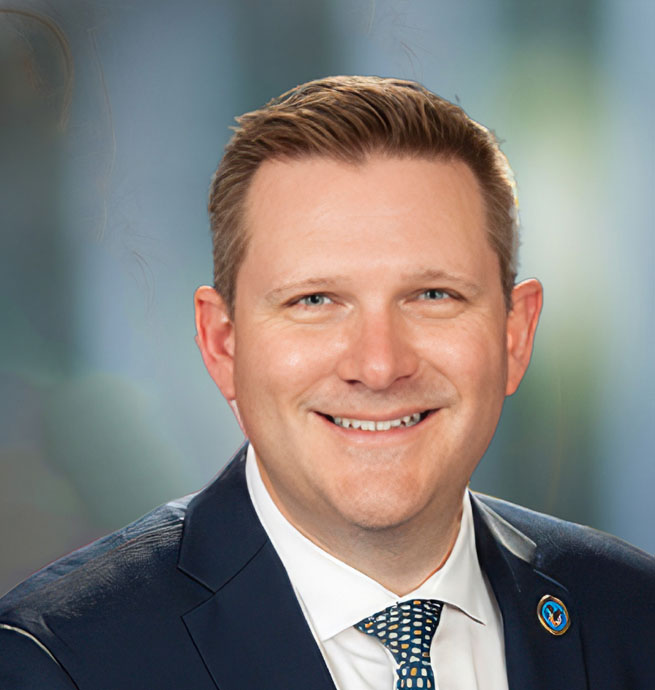
Putting Veterans First
Insights from John Boerstler, Former Chief Experience Officer, U.S. Department of Veterans Affairs
By Michael J. Keegan
Editor’s Note: Since this conversation, John Boerstler has transitioned back to the private sector from government service
In an era where customer experience (CX) is becoming a critical measure of institutional success, government agencies like the U.S. Department of Veterans Affairs (VA) are taking decisive steps to overhaul how they interact with their key constituencies. From slow service delivery to fragmented systems, the VA has struggled to provide timely and efficient services to the veteran community in the past.
John Boerstler, the then chief experience officer (CXO) at the VA, joined me on The Business of Government Hour to share his insights into the transformative journey the department has undertaken to improve veteran services, the challenges faced, and the progress they have made under his leadership. Boerstler, a veteran himself, brings a passion for service and a personal understanding of the difficulties veterans face, fueling his commitment to creating a veteran-centered VA. The following is a summary of our discussion, complemented by additional and updated research.
Customer Experience Strategy and Priorities
Boerstler leads efforts that enhance the overall experience of veterans, their families, caregivers, and survivors when they interact with the VA. The primary objective is to ensure that veterans have a seamless, positive, and consistent experience across all touchpoints of VA services, from health care to benefits and memorial services. “Our mission,” explains Boerstler, “is about creating a system where veterans feel seen, heard, and understood. It’s about transforming their experiences across every touchpoint they have with the VA.”
He defines customer experience as the cumulative effect of interactions between the VA and veterans over the course of their relationship and measures overall experience focusing on three key metrics: ease, effectiveness, and emotion:
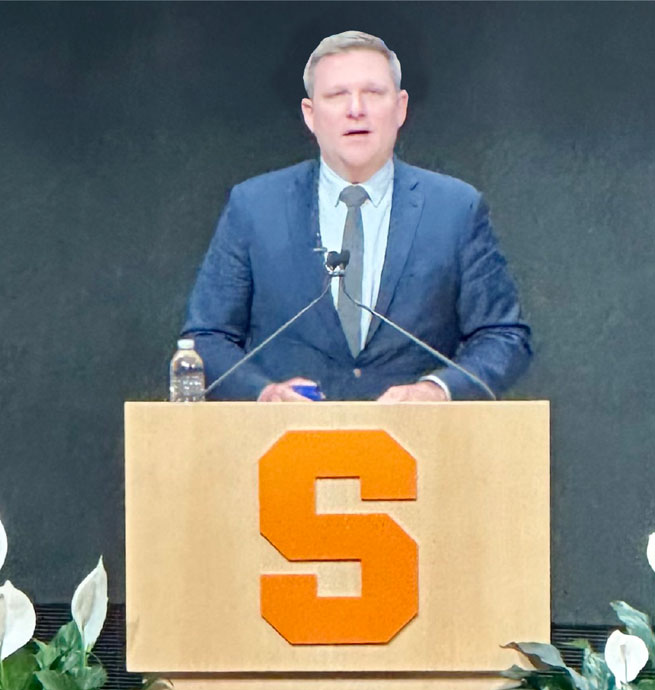
• Ease: How simple it is for veterans to navigate the VA system, such as finding parking or reaching specific service points.
• Effectiveness: Whether veterans understand the information provided by their service representatives or health care providers.
• Emotion: The emotional resonance, respect, and trust veterans feel during their interactions with VA staff.
Boerstler emphasizes the need to enhance the VA’s customer acquisition funnel, aiming to reach the 50 percent of veterans who currently do not access VA benefits or services. This involves improving outreach and simplifying processes to make the VA more approachable. Another core focus is on fostering trust among existing veterans and ensuring they feel supported and valued. This entails empowering VA staff with the tools, data, and training needed to effectively serve veterans and their families. Ultimately, the VA aims to ensure that veterans can access services across multiple channels. This involves broadening communication strategies and service delivery methods to meet veterans where they are, both physically and digitally.
For Boerstler, his office ensures that the voices of veterans are heard and reflected in the way the VA delivers its services. Doing this involves instilling a customer-first mindset within the VA workforce. Boerstler recognizes the need to promote a culture where VA employees prioritize the needs and expectations of veterans in their daily operations, with an emphasis on empathy, transparency, and respect. “We’re dedicated to improving the overall experience for veterans by focusing on their needs and ensuring that our services are accessible, efficient, and empathetic,” declares Boerstler.
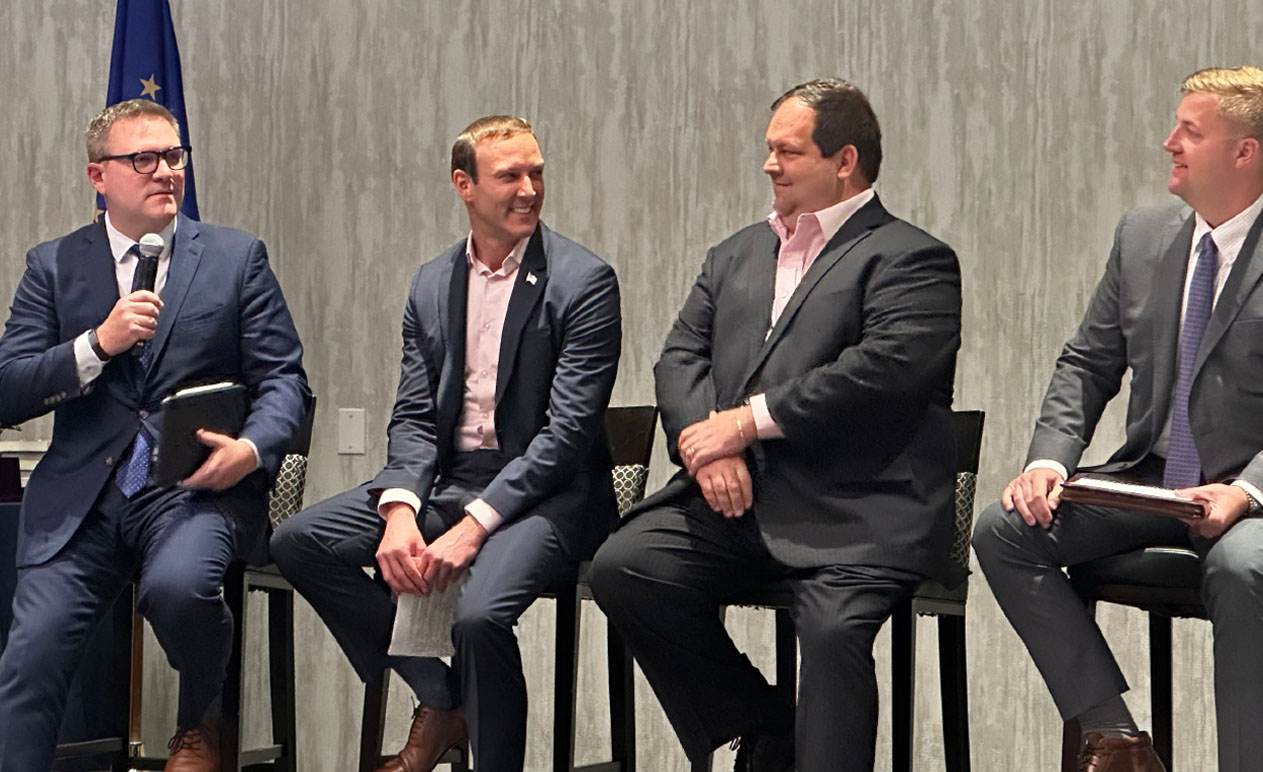
Part of the mission of his office is to ensure that veterans can access VA services easily, whether online, in person, or over the phone. This involves optimizing digital platforms, streamlining processes, and removing unnecessary bureaucracy. The CXO collaborates with various VA departments, including health care, benefits, and memorial services, to ensure that the experience is consistent and integrated. This collaboration is key to breaking down silos and ensuring that veterans experience a unified VA system. “We aim to integrate our efforts across different departments and services to ensure a cohesive and seamless experience for veterans. It’s about breaking down silos and working together to improve every aspect of their interaction with the VA,” outlines Boerstler.
Understanding Veterans’ Needs: A Data-Driven Approach
In 2016, the trust level with the VA was measured at 55 percent, which was considered low. Over the last nine years, trust has risen to 80.4 percent, reflecting the office’s success in improving veterans’ experiences. Boerstler emphasizes that the foundation of the VA’s customer experience transformation is a data-driven understanding of veteran needs. “Our approach is fundamentally driven by data,” notes Boerstler. “We leverage data to understand where the gaps are in our services and to identify specific areas where we need to make improvements.” Through extensive feedback mechanisms, such as surveys, the VA collects millions of data points annually, which help the department gain insights into veterans’ pain points and areas needing improvement. These insights are vital in identifying gaps in service and ensuring that every program or initiative the VA rolls out is designed with veterans’ needs at the forefront.
“Our mission is about creating a system where veterans feel seen, heard, and understood. It’s about transforming their experiences across every touchpoint they have with the VA.”
John Boerstler, CXO, U.S. Department of Veteran Affairs

A significant part of this process is the use of the Veterans Signals (V-Signals) platform, which gathers real-time feedback from veterans across the country. By asking veterans directly about their experiences with VA services, the department can address issues as they arise, allowing for a more proactive approach to service improvement. Boerstler highlights the importance of leveraging this kind of data not just to respond to problems but to anticipate them, ensuring that veterans have a seamless and efficient experience. “We systematically collect and analyze feedback from veterans to guide our initiatives,” Boerstler explains. “This data helps us pinpoint exactly what veterans are experiencing and where we need to adjust our strategies.” VA uses a range of metrics to evaluate the effectiveness of its our programs. These include satisfaction scores, service utilization patterns, and other key performance indicators that give us a clear picture of how well we’re meeting veterans’ needs. “Our data-driven approach,” Boerstler underscores, “is all about continuous improvement. By regularly reviewing data and performance metrics, we can make iterative changes and ensure that our services evolve to better serve veterans over time.”
Overview of Customer Experience Tools
Customer experience is measured using a combination of quantitative and qualitative methods that capture the customer’s perception of their interactions with an organization. In the case of the Department of Veterans Affairs, as explained by John Berstler, the VA uses several tools and strategies to measure and improve CX. These tools help capture feedback, streamline services, and improve the overall interaction between veterans and the VA.
Journey mapping is used to visualize and understand the end-to-end experience of veterans as they interact with various VA services. This tool helps identify key touchpoints, barriers, and emotions associated with each phase of the veteran’s journey. By mapping out the veteran’s journey, the VA can pinpoint specific moments where friction or confusion occurs. This insight allows the VA to design solutions that streamline processes, improve communication, and ensure veterans receive the support they need at critical stages.
Human-centered design (HCD) is a methodology that the VA uses to design services, policies, and products around the actual needs and experiences of veterans. It involves deep engagement with veterans to co-create solutions that directly address their pain points. HCD ensures that the services the VA provides are intuitive and aligned with what veterans truly need. By involving veterans in the design process, the VA creates more relevant and user-friendly solutions, leading to a better overall experience.
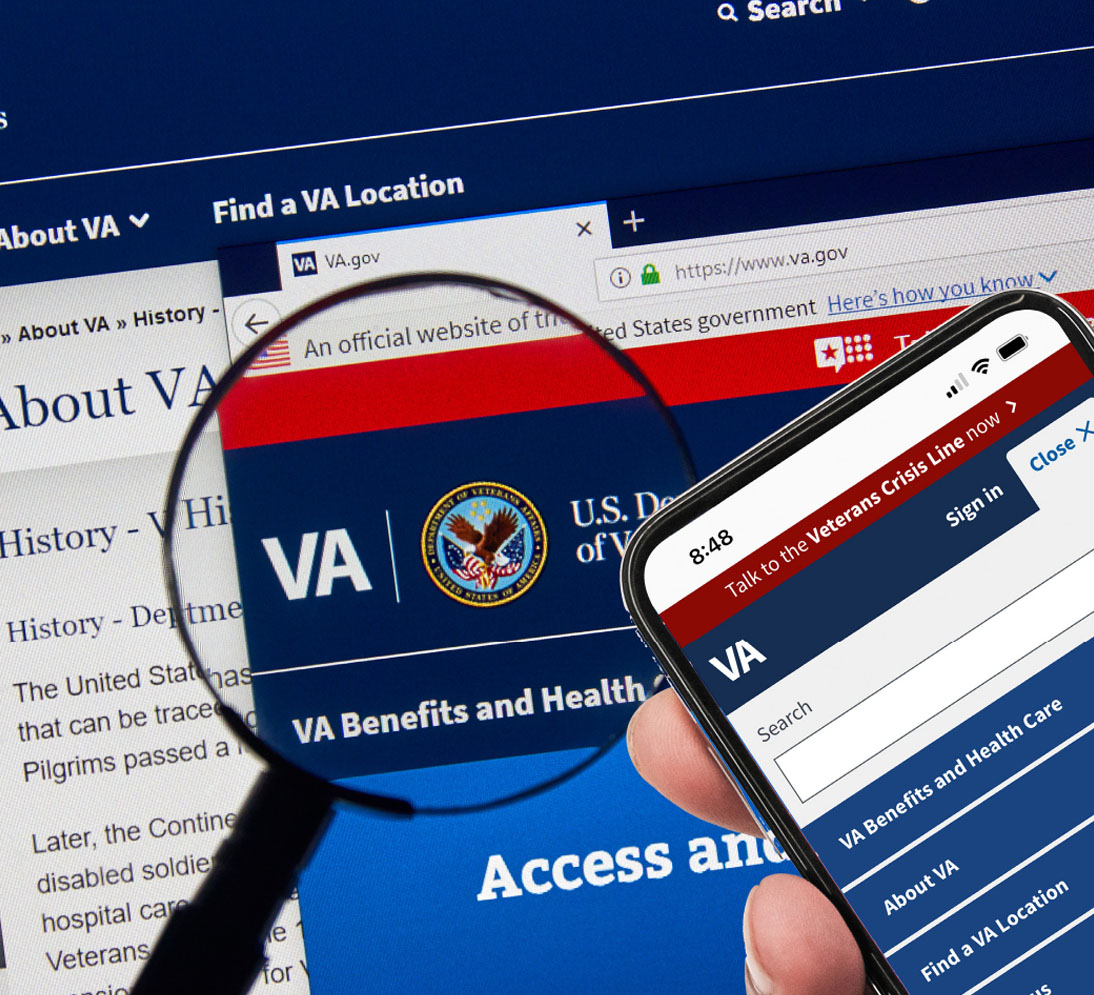
Prioritizing Accessibility and Streamlining Services
One of the key areas where the VA has focused its efforts is in simplifying access to services. The VA serves a diverse veteran population, many of whom live in rural areas or have limited access to technology. In response, the VA has been working on several fronts to improve accessibility. This includes expanding telehealth services, which were especially crucial during the COVID-19 pandemic and streamlining the VA’s digital interfaces to make it easier for veterans to navigate the department’s many offerings. He notes that telehealth has improved patient satisfaction by providing more convenient access to care. This is particularly important for veterans who may have difficulty traveling to VA facilities.
Boerstler explains that the VA is also working to reduce redundancy and fragmentation in its services. The department is notorious for having multiple systems for handling different types of claims or services, which often forces veterans to navigate complex bureaucratic processes. By integrating these systems and ensuring that veterans only need to provide their information once, the VA is moving toward a more unified and efficient model of service delivery.
Putting Veterans First
A core principle guiding Boerstler’s approach is human-centered design, which means involving veterans directly in the design of services and solutions. This approach is evident in the way the VA has redesigned its website and mobile app, ensuring that they are intuitive and easy to use. Veterans can now access their benefits, health care appointments, and personal information through a more user-friendly interface, significantly reducing the frustration that many had previously experienced with VA technology.
Boerstler also emphasized the importance of a multichannel or omni-channel approach to increasing access to VA services. This involves integrating customer experience, employee experience (EX), and user experience (UX) through various access points such as mobile apps, chatbots, and phone lines like the Veteran Crisis Line. The focus is on meeting veterans where they are and offering 24/7 self-service access.
The VA also recognizes that not all veterans are tech-savvy or have access to reliable internet. In response, Boerstler stresses the importance of maintaining robust in-person services while simultaneously expanding digital options. This hybrid approach ensures that veterans can choose the method of service that best suits their needs, whether that’s walking into a VA office, making a phone call, or managing their affairs online. “One example” Boerstler describes,” we always go back to the patient experience journey map, which is laser focused on outpatient services and primary care visits. . . .We created a program called the Redcoat Ambassadors who are volunteers . . . that greet patients, similar to Walmart greeters, and helps you find your way and will actually take you by the hand or, you know, or lead you to the clinic or to the section of the facility that you need to get to so that that ease the piece of the journey is solved.”
Increasing Trust Amongst Veterans
Rebuilding trust with veterans is a central theme in Boerstler’s vision for the VA. "Trust is always our north star in everything we do," he declares. For many years, the VA has faced criticism for inefficiency, long wait times, and subpar care. Boerstler acknowledges this history but is optimistic about the changes underway. He believes that improving CX at the VA is not just about improving services but about fostering a culture of accountability at every level of the organization.
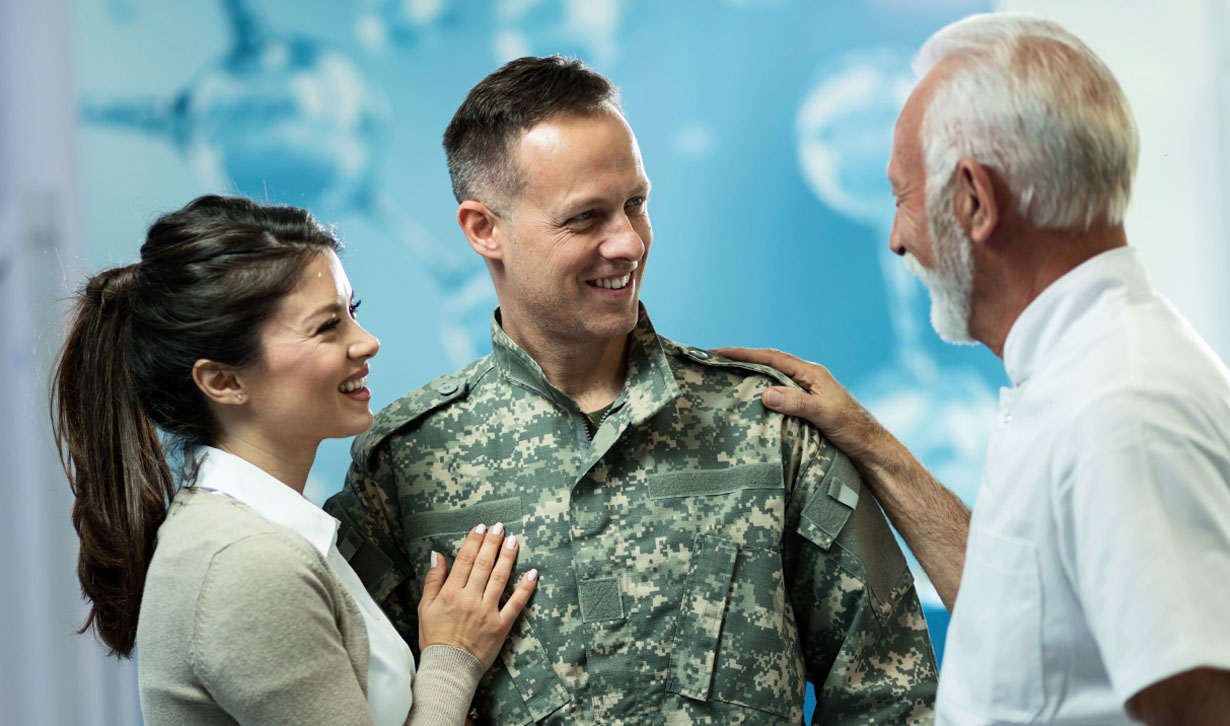
Boerstler also highlights the importance of transparency in building trust. The VA has made efforts to increase transparency by publishing key performance data and openly communicating with veterans about the steps the department is taking to improve. This openness helps veterans feel more confident that the VA is working in their best interest and is committed to rectifying past mistakes.
These efforts are leading to results. For example, veteran trust in VA outpatient care has increased to 91.8 percent—up from 85.4 percent in 2017. Veteran trust has increased during each of the past seven years. This finding is based on a survey of more than 480,000 Veteran patients. This survey mirrors the findings of independent studies. According to a Medicare’s nationwide survey of patients, VA hospitals outperformed non-VA hospitals on all 10 core patient satisfaction metrics.
“We’re now seeing trust scores increase among veterans, their families, caregivers, and survivors,” explains Boerstler, “where they’re starting to believe that we are building a VA that can deliver on their needs. . . . That increase in trust has been very encouraging, and it’s motivating us to continue pushing forward with these improvements.”
Boerstler attributes the overall increase in trust among veterans to several factors related to improving customer experience, access, and engagement. “We’ve learned so much on quantitative and qualitative measurement on the customer experience side. . . . We’re taking all that information and using it to improve how we deliver care and benefits to veterans.” He also notes making strides in personalizing the veteran experience, particularly through digital and mobile access points. “Veterans, within the palm of their hand, using biometric identification, can message their providers, refill prescriptions, and check the status of their claims.” As outlined earlier, the VA has worked to better assist veterans in their transition from military to civilian life. “We’re making sure that we’re improving our customer acquisition and funnel, getting in front of these folks much further upstream before they leave active duty.” These initiatives contributed to making the VA more responsive, accessible, and aligned with veterans’ needs, driving the increase in trust.
Transition from Military to Civilian Life"
A critical focus of Boerstler’s work is improving the transition process for veterans moving to civilian life. “The first [pain point],” explains Boerstler, “was focused on the process itself—the transition process.” He outlined four key pain points:
• Process standardization: The current transition process lacks clarity and consistency across organizations. “It’s opaque,” admits Boerstler, "the process lacks standardization across different organizations and installations, and it’s confusing in terms of how we can align individual personal goals with the process itself."
• Life planning: Veterans don’t have sufficient time to plan for life after service. “They don’t have time to develop comprehensive plans for life after the military, so how do we design an experience that meets their most immediate and priority needs during that life transition?” poses Boerstler.
• Information overload: Transition seminars often overwhelm veterans with too much information. “There’s information overload,” he asserts. “We are giving them ‘death by PowerPoint’ in a very compressed time frame during that transition process, which as you can imagine prevents understanding and actionability.”
• Service connection: Veterans face challenges navigating the various programs available to them. “The fourth [pain point] is really program and service connection. There’s a huge navigation challenge when becoming aware of the numerous resources and programs available to veterans,” Boerstler says.
Boerstler notes that the VA aims to address these issues by providing personalized digital tools, such as a checklist tailored to individual needs and goals and ensuring access for spouses and caregivers. “We’re rethinking how we can develop a personalized checklist for lack of a better term, in a digital experience, that is presented to them much further upstream . . . so that it’s not so overwhelming and confusing,” he says.
Looking Ahead
Boerstler is optimistic about the future of the VA and the continued evolution of veteran experience. He envisions a VA that not only meets veterans’ needs but exceeds their expectations. The ongoing modernization of the VA’s systems, the expansion of telehealth and digital services, and the commitment to human-centered design are all steps toward that goal.
Boerstler’s vision for the VA is one where veterans feel truly valued and supported by the institution that was created to serve them. By focusing on empathy, accountability, and continuous improvement, the VA is gradually transforming from an organization burdened by its past to one that is prepared to meet the challenges of the future.
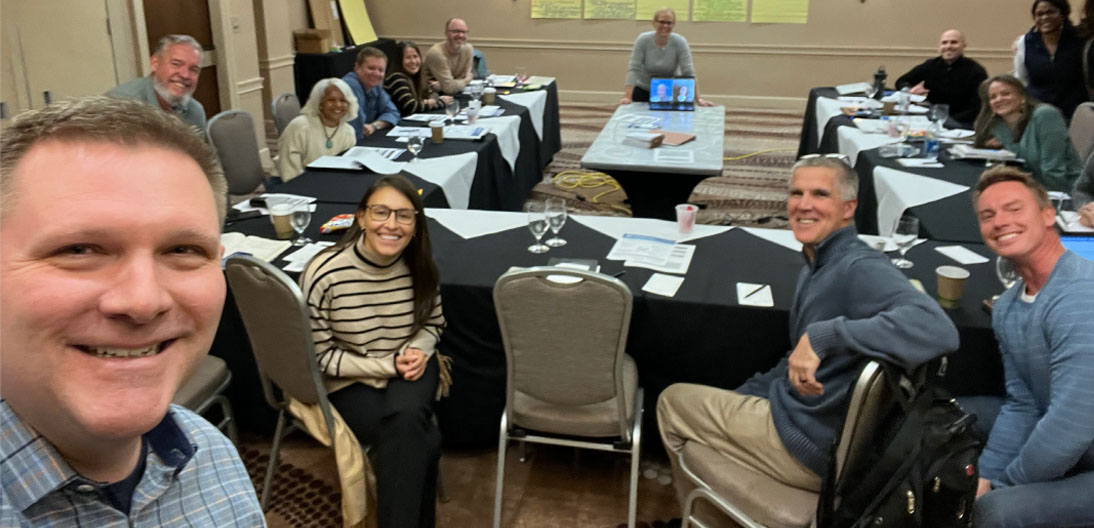
Conclusion
John Boerstler’s tenure as chief experience officer at the U.S. Department of Veterans Affairs marks a turning point in how the VA approaches service delivery. While challenges remain, the progress made under Boerstler’s leadership provides a strong foundation for the VA’s continued evolution, ensuring that veterans receive the care, respect, and services they deserve.
Resources
To learn more about the U.S. Department of Veterans Affairs, go to va.gov.
To hear the interviews from The Business of Government Hour, go to businessofgovernment.org/interviews.
To download, listen, and subscribe to the show, go to Apple Podcast, Spotify or Audible.
To view excerpts of the show, go to youtube.com/businessofgovernment.